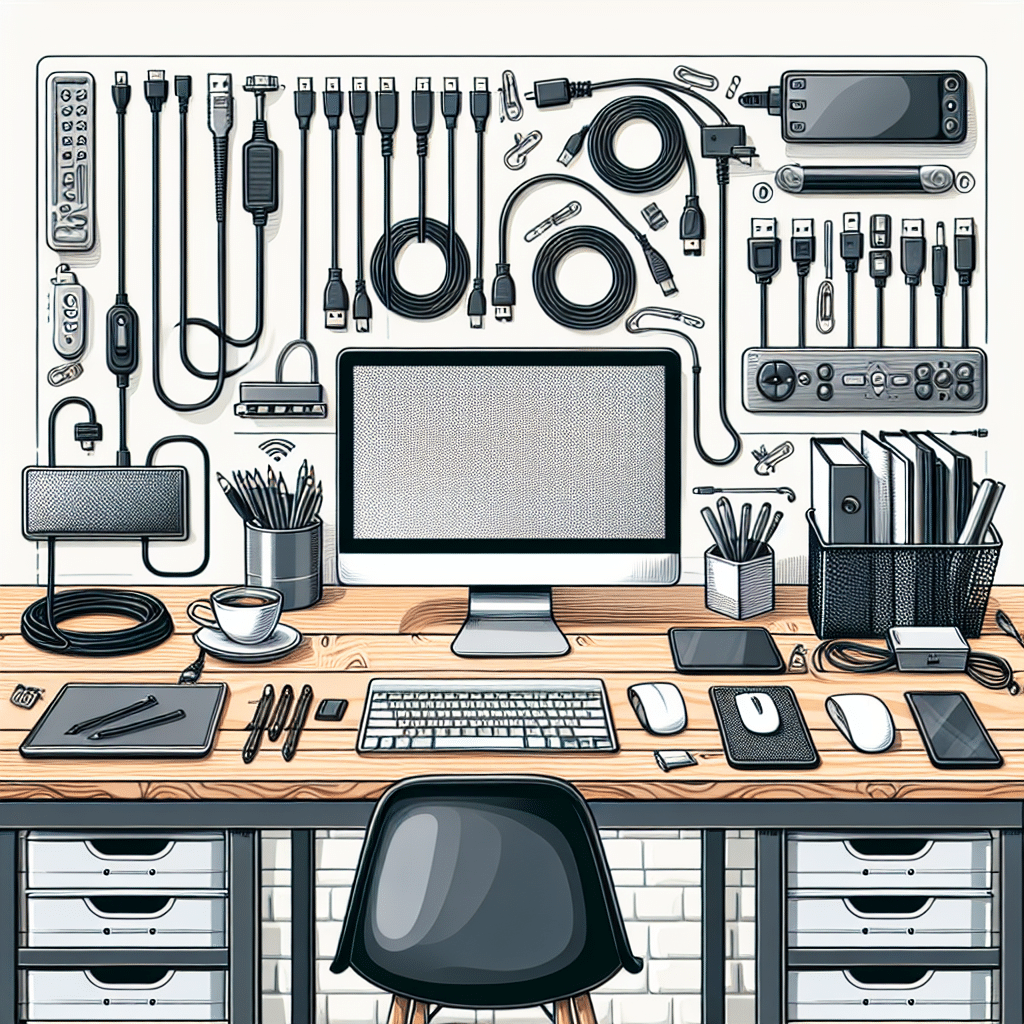Understanding Cable Management
Efficient cable management at home helps maintain a clean, organized workspace, enhances productivity, and reduces the risk of accidents. With the increasing prevalence of electronic devices, proper cable management strategies have become essential.
Why Cable Management Matters
- Safety: Loose cables can pose tripping hazards. Proper management minimizes risks associated with tangled wires.
- Aesthetic Appeal: A tidy desk is visually pleasing and can boost motivation and creativity.
- Device Longevity: Organized cables prevent wear and tear on the cords, extending the life of your tech gadgets.
Essential Tools for Cable Management
- Cable Ties: Eco-friendly options such as Velcro ties are adjustable and reusable, allowing for easy organization.
- Cable Sleeves: These come in various sizes and colors, concealing wires and reducing the clutter visual.
- Cable Trays: Mounted beneath your desk, cable trays provide a designated space for surplus wires.
- Adhesive Clips: These can be easily attached to walls or surfaces, holding cables securely in place.
- Cable Boxes: Ideal for housing power strips and excess cords, these boxes keep them out of sight.
- Cable Labels: Labeling cables helps quickly identify their purpose, making troubleshooting easier.
Planning Your Cable Management
Assess Your Setup
Before implementing any strategy, assess your workspace setup. Take inventory of all devices, identifying the associated cables. This will give you a clear picture of what you need to manage.
Prioritize Accessibility
Ensure that frequently used cables are easy to access yet organized. This involves strategic placement and the use of various tools to maintain that accessibility without compromising organization.
Effective Cable Management Strategies
1. Under-Desk Cable Management
Utilize your desk’s underbelly for optimal cable organization. Install cable trays or hooks to hold cords neatly out of sight.
- Installation Tips: Use screws, adhesive, or clamps to secure the trays. Ensure the placement allows for easy access and minimal visibility.
2. Wall-Mounted Solutions
Opt for wall-mounted solutions, such as cable racks or hooks, to free up desk space. These options reduce clutter while keeping cables organized.
- DIY Approach: Use a simple shelf or a thin wooden plank to hold binders or clips that can then be used to run cables along the wall.
3. Cable Management Sleeves
Group several cables together using cable sleeves, which can be easily cut to the desired length.
- Variety of Designs: Choose colors that match your desk aesthetics or function—transparent plugs, fabric finishes, etc.
4. Use Cord Covers
For a more finished look, install cord covers along walls or baseboards to hide cables running to various devices.
- Installation: Adhesive options simplify the process, allowing you to simply peel and stick without drilling holes into walls.
5. Desk Grommets
Invest in grommets for your desktop to allow cables to pass through the surface discreetly. This method works particularly well for desks with multiple devices along the back.
- Types of Grommets: Choose from simple plastic types to decorative metal versions, depending on your desk style.
6. Creative Storage Solutions
Utilize existing furniture creatively. For example, use decorative baskets or boxes to hide charging cables and power strips.
- Dual-Purpose Furniture: Consider ottomans or coffee tables with built-in storage where you can stow cables away.
Regular Maintenance Practices
Routine Checks
Periodically inspect your cable management strategies. Cables can become untucked or tangled, and reorganizing should be a normal part of your workspace upkeep.
Cleaning
Keep cables dust-free and visually organized. Dust accumulates in hidden areas, and regular cleaning will help maintain a healthy workspace.
Common Mistakes to Avoid
- Overstuffing Cable Management Tools: Ensure not to overload trays or boxes, which can cause overheating.
- Ignoring Labeling: Failing to label cables can lead to confusion later, especially when troubleshooting.
- Neglecting Future Usability: Plan ahead for future device additions or adjustments in technology use, ensuring your management system is flexible.
Adapting to Changing Technology
Stay informed about technological advancements that might affect your workspace, such as wireless technologies and smart home devices. Investing in quality organization tools can save you time and effort in the long run.
Conclusion
While specific cable management systems can differ based on individual preferences and desk layouts, employing these strategies will enhance efficiency, aesthetics, and overall productivity in your home workspace.
